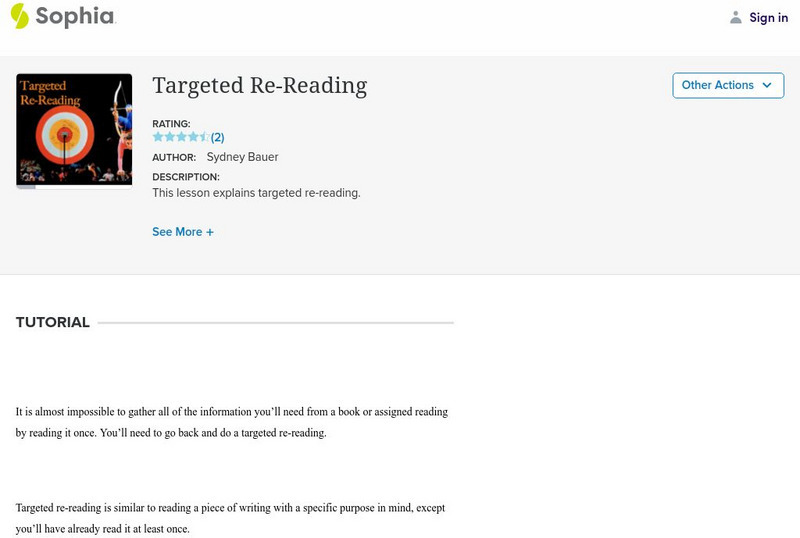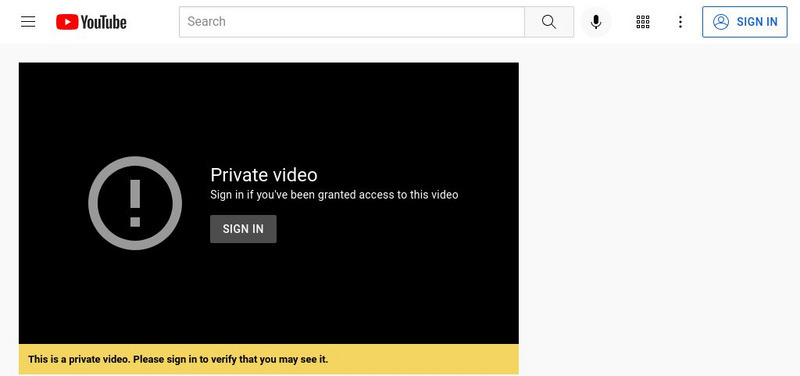Hi, what do you want to do?
Lesson Planet
EdTech Tuesday: NewsBug
Here is a great sneak peek into the NewsBug app, which curates news stories and images appropriate for classroom use and is free from social media connections and in-app purchases.
PBS
Top 4 Tips to Spot Bad Science Reporting
How can people make good decisions about their health when modern news reporting is so unreliable? Using an informative video resource, viewers discover the acronym GLAD. They learn to get past the clickbait, look for crazy claims,...
PBS
Why Do Our Brains Love Fake News?
Fake news is all about the dorsolateral prefrontal cortex versus the orbitofrontal cortex. Huh? Get the facts, the real deal, with a short video that explains clearly and succinctly what's going on in our brains that leads us to listen...
British Council
William Shakespeare
After watching a three-minute video detailing the life of William Shakespeare, scholars take part in several activities designed to show what they know about the famous writer. Learners read a series of eight sentences and put them in...
PBS
The Pilgrims: European Plague in Native New England, 1616-1619
Before the Pilgrims' arrival to New England, a vicious plague swept across New England and wiped out over 50% of the Native American people from Maine to Massachusetts. Watch a video that examines this devastation and the role it played...
PBS
The Pilgrims: Mayflower Compact
What was the Mayflower Compact? Watch a video that explains the purpose of coming to New England on the Mayflower and the social compact that bound the Pilgrims to the government and laws that would be created in the new land.
PBS
The Pilgrims: The First Winter
After over 66 days of sailing across the Atlantic on the Mayflower, the Pilgrims met their worst enemy: winter. Watch a video that discusses the difficulties and deaths the passengers faced once they arrived to Plymouth during the winter...
Townsend Press
Active Reading and Study
The difference between an active reader and a passive reader has to do with the ways they access the same material. Review study skills and note-taking techniques with a video about active reading, which includes tips for using...
Townsend Press
Critical Reading
Skilled readers know that any author's argument must be carefully analyzed and evaluated. Assist youngsters in their reading pursuits with a video about logical fallacies, including circular reasoning, straw man arguments, and false...
Townsend Press
Relationships I
Transition words can be a very important addition to any writer's toolbox. Learn more about addition words and time words, and how they can enhance the organization of any writing passage, with an informative video about reading...
Townsend Press
Relationships II
Cause and effect, problem and solution, compare and contrast, illustration and example -- your class has undoubtedly seen these essay structures before. But how are they related? Watch a reading video about the ways relationships between...
Townsend Press
Argument
Form well-crafted arguments with the help of an educational video. Fourth graders study various examples of persuasive arguments, including thesis statements and cartoons, and observe the ways that supporting details can enhance the...
Townsend Press
Purpose and Tone
A powerful image or well-placed comment always has intention behind it. Guide young readers through author's purpose and tone with a language arts video that explains why word choice is key in writing clearly and coherently.
Townsend Press
Inferences
A picture is worth a thousand words. Help your class out with some of those words with a video about drawing inferences from reading passages, images, and other media. The resource focuses on the supporting details of each passage...
Townsend Press
Implied Main Ideas
Skilled readers can find the main idea of an informative passage without finding it directly stated. A reading video prompts elementary learners to examine supporting details in several examples, and to infer what the main idea...
Townsend Press
Supporting Details
Helpful for both reading and writing units, a video about identifying supporting details in reading passage shows young learners the importance of bulking up informative writing. The presentation uses cartoons and longer passages to...
Townsend Press
Main Ideas
Once you find the main idea of a paragraph, it's easy to see how the rest of the details are supporting evidence. Take your readers through an explanatory video that demonstrates the points and supports of several reading examples.
Crash Course Kids
Star Personalities
Reach for the stars with a fun space science video! Viewers learn about the different types of stars in the galaxy, as well as the ways to organize and classify them based on color and age.
TED-Ed
How Do Solar Panels Work?
What are those shiny things that people are installing on the roofs of their houses? Learn about the structure, function, and logistics of solar panels, as well as the challenges of using the sun's energy as our exclusive power source on...
Sophia Learning
Sophia: Targeted Re Reading
This lesson defines and explains how to do targeted re-reading and provides two literary examples. It offers this information in both text and audio formats.
eSpark Learning
E Spark Learning: Textual Evidence Instructional Video (7.R1.1)
This video shows an example of how to draw conclusions from an informative text and back it up with evidence from the text. [6:02]
Annenberg Foundation
Annenberg Learner: Conversations in Literature
A series of 8 instructional videos, each about 60 minutes in length, designed to model effective reading habits through envisionment building. Topics include Responding As Readers, Envisioning, Stepping In, Moving Through, Rethinking,...
Imagine Learning Classroom
Learn Zillion: Infer and Cite Evidence of Character Traits
In this lesson, you will infer and cite evidence of character traits that the author shows, rather than tells, by making generalizations about the main character. [4:14]
Imagine Learning Classroom
Learn Zillion: Draw Inferences From the Text
In this lesson, you will learn how to make a valid inference by analyzing parts of a text. [5:27]




























